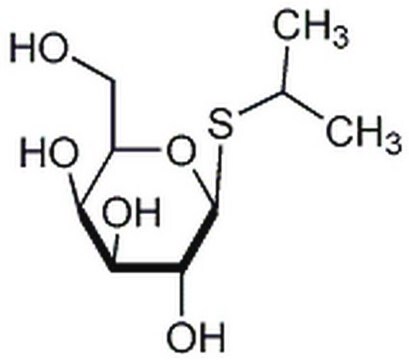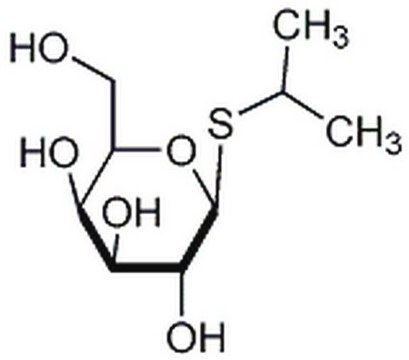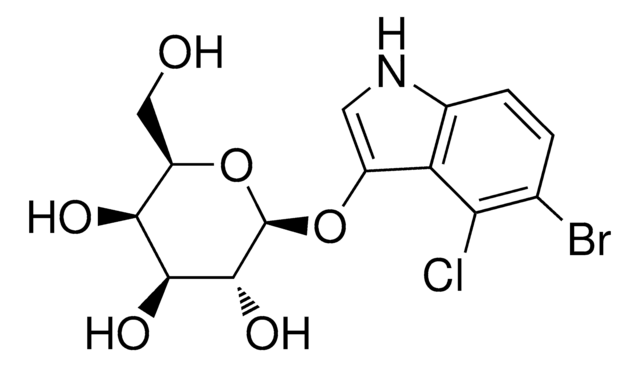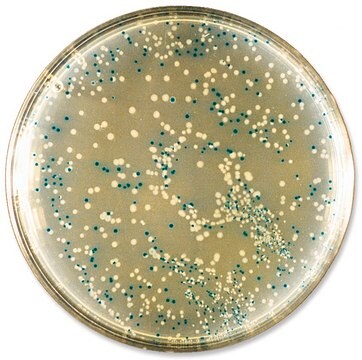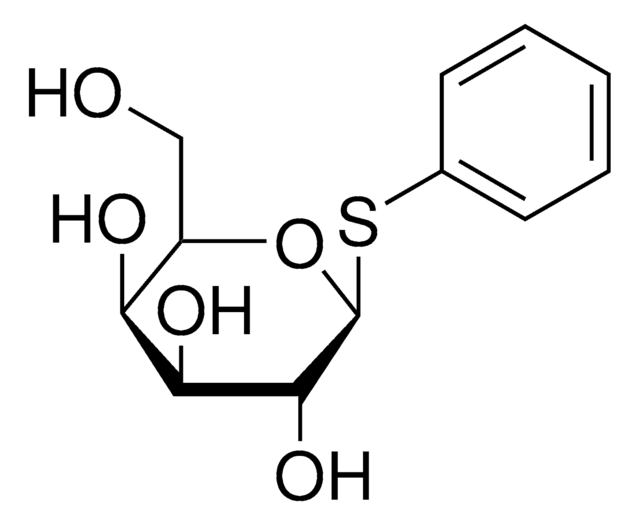I6758
IPTG
≥99% (TLC), ≤0.1% Dioxane
Synonym(s):
Isopropyl β-D-1-thiogalactopyranoside, IPTG, Isopropyl β-D-thiogalactoside
About This Item
Recommended Products
biological source
synthetic
Quality Level
200
300
description
non-ionic
Assay
≥99% (TLC)
form
powder
technique(s)
thin layer chromatography (TLC): suitable
impurities
≤0.1% Dioxane
color
white to off-white
useful pH range
5-7 (50 g/L)
mp
105 °C ((221 °F))
solubility
water: 0.05 g/L, clear
application(s)
cell analysis
life science and biopharma
storage temp.
2-8°C
SMILES string
CC(C)S[C@@H]1OC(CO)[C@H](O)C(O)[C@H]1O
InChI
1S/C9H18O5S/c1-4(2)15-9-8(13)7(12)6(11)5(3-10)14-9/h4-13H,3H2,1-2H3/t5-,6+,7+,8-,9+/m1/s1
InChI key
BPHPUYQFMNQIOC-NXRLNHOXSA-N
Looking for similar products? Visit Product Comparison Guide
General description
Application
- in the induction of protein expression in Lactobacillus reuteri GroEL and mutants
- in the induction of protein expression in Escherichia coli
Biochem/physiol Actions
Other Notes
Reconstitution
comparable product
Signal Word
Danger
Hazard Statements
Precautionary Statements
Hazard Classifications
Carc. 1B
Storage Class Code
6.1C - Combustible acute toxic Cat.3 / toxic compounds or compounds which causing chronic effects
WGK
WGK 3
Flash Point(F)
Not applicable
Flash Point(C)
Not applicable
Personal Protective Equipment
Choose from one of the most recent versions:
Certificates of Analysis (COA)
Don't see the Right Version?
If you require a particular version, you can look up a specific certificate by the Lot or Batch number.
Already Own This Product?
Find documentation for the products that you have recently purchased in the Document Library.
Customers Also Viewed
Articles
General protocols for growth of competent cells and their transformation (uptake of DNA).
Our team of scientists has experience in all areas of research including Life Science, Material Science, Chemical Synthesis, Chromatography, Analytical and many others.
Contact Technical Service
